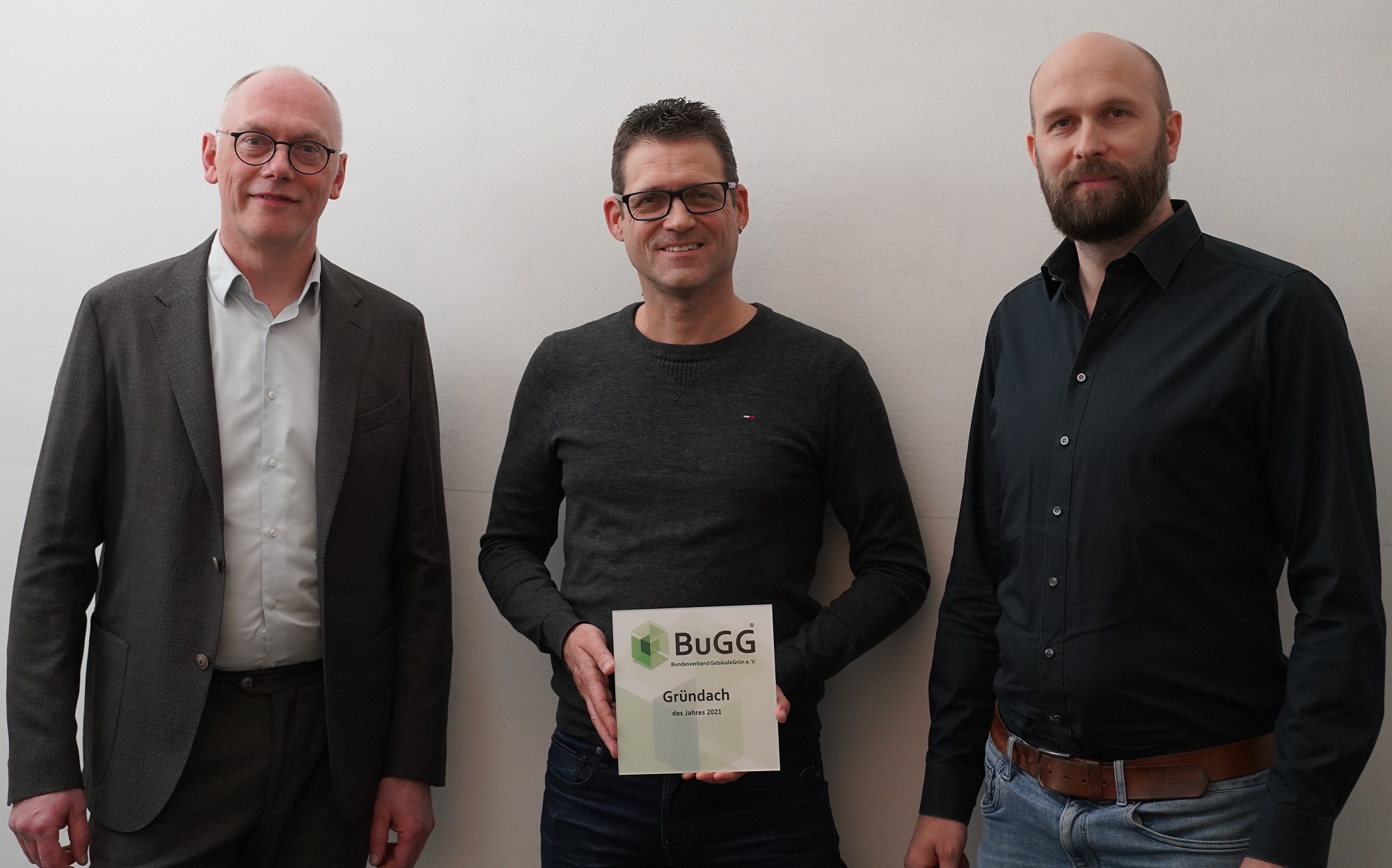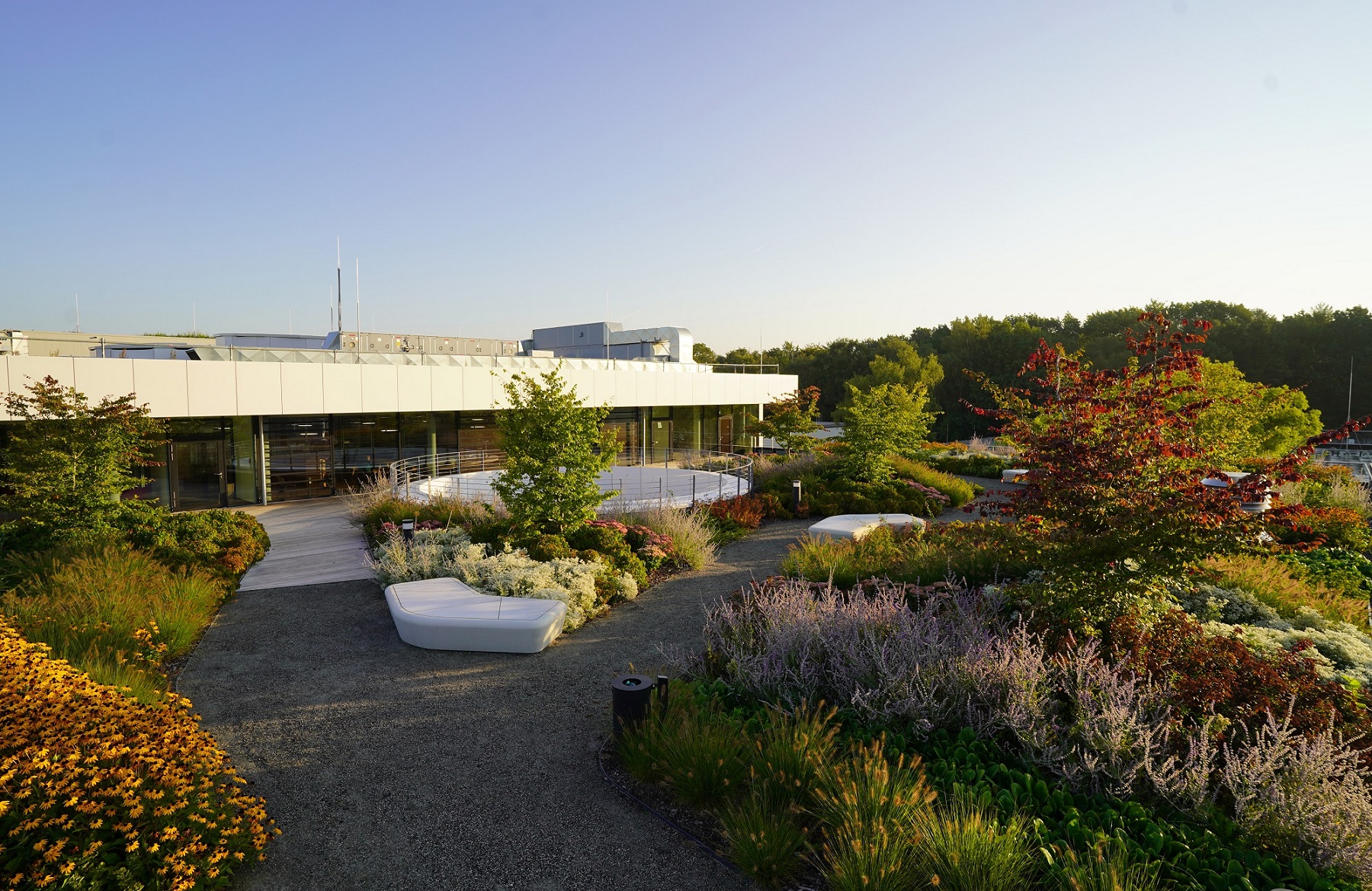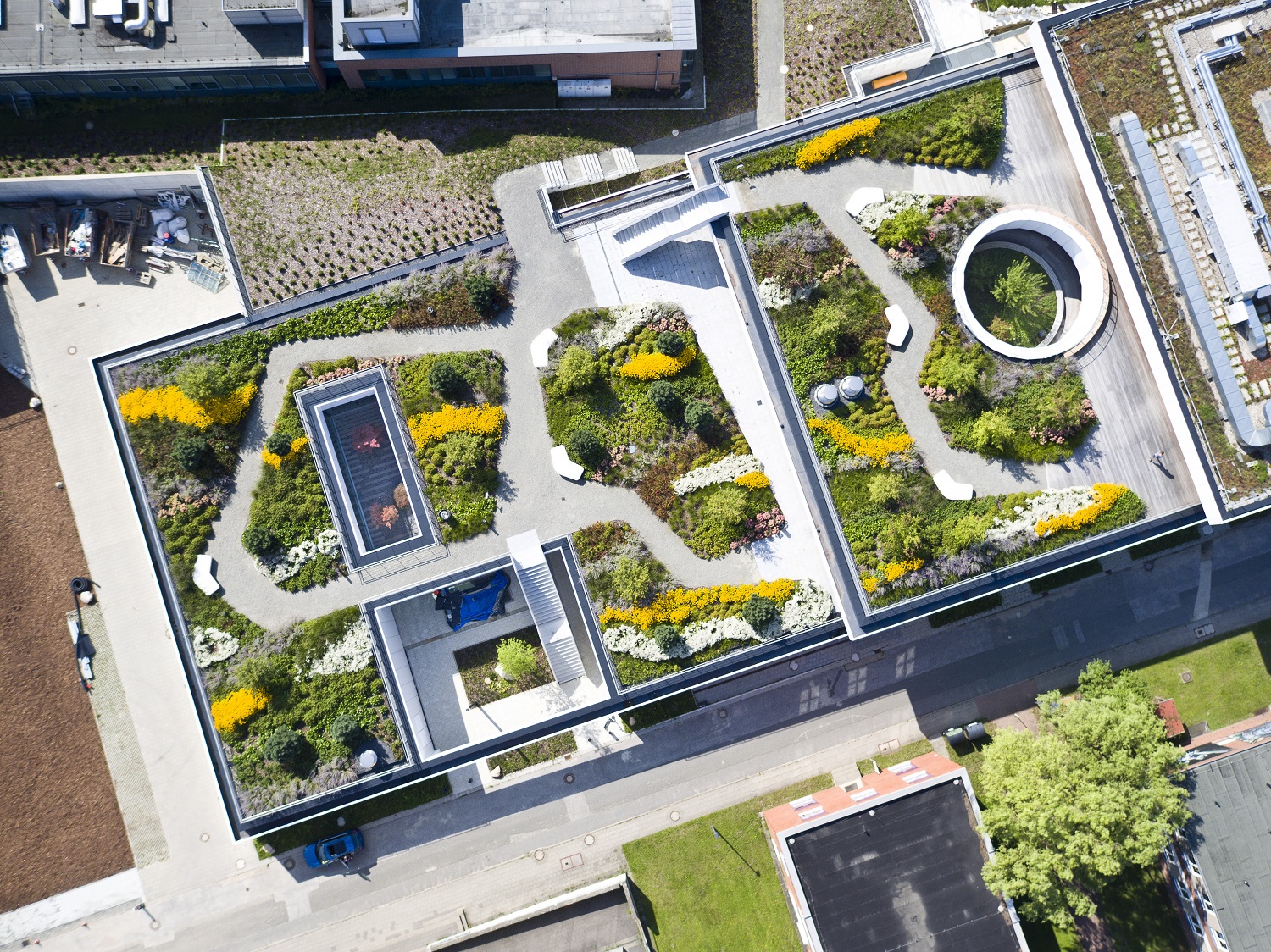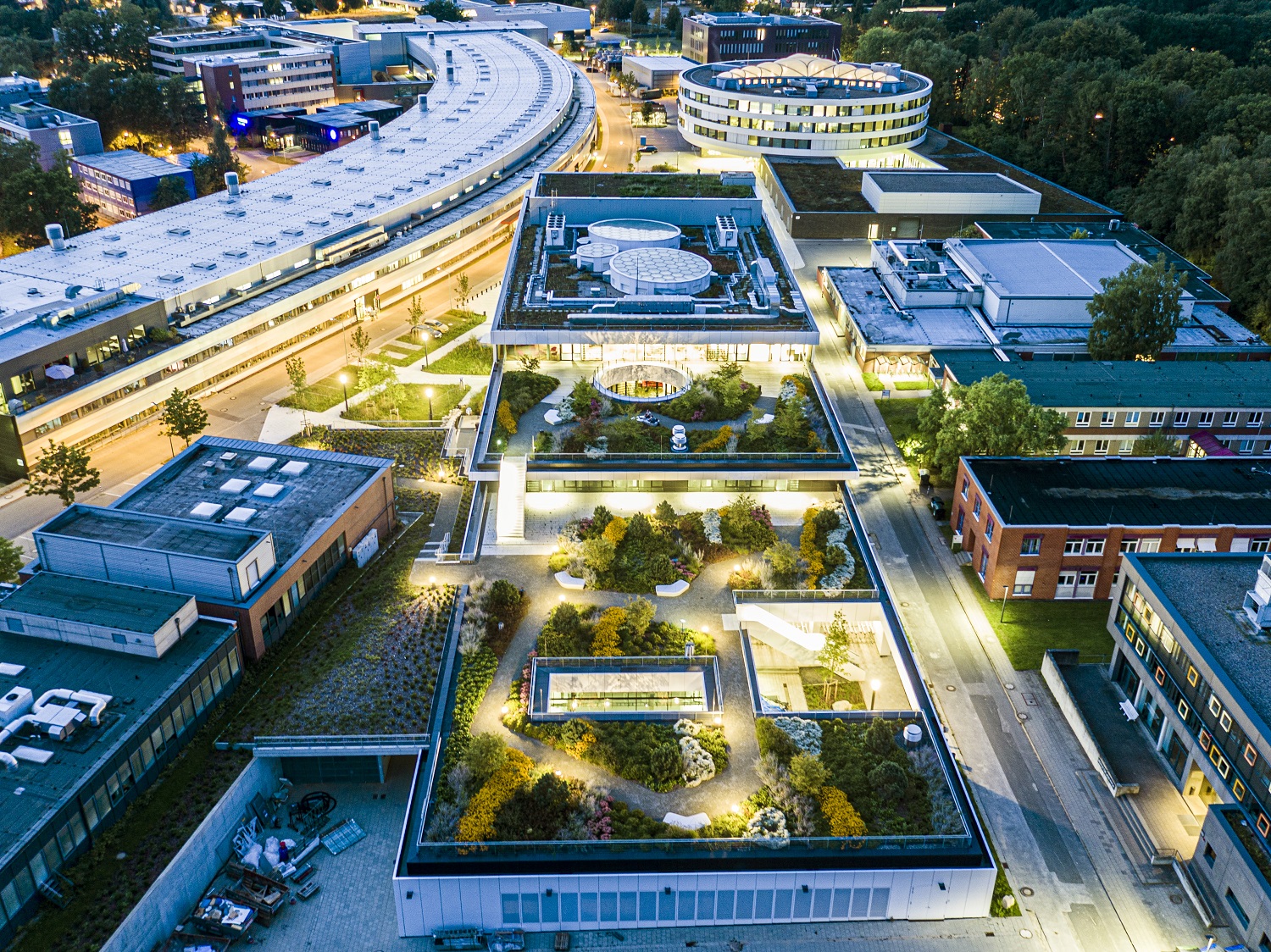The winner of “BuGG Green Roof of the Year” 2021 has been recently announced!
The German Association of Building Greening (Bundesverband GebäudeGrün e.V. – BuGG) has been holding the annual election for “BuGG Green Roof, Facade and Interior Greening of the Year” since 2001. BuGG members can submit outstanding objects. The election will then take place during a members’ meeting or an event.
At the end of last year, the election was held in digital form and with a large number of participants during the Federal Congress of Building Greening (Bundeskongress Gebäudegrün). The winning project for the “BuGG Green Roof of the Year” 2021 is the designed and accessible green roof of the Max Planck Institute for the Structure and Dynamics of Matter in Hamburg, submitted by BuGG member Landschaftsarchitektur+.
The building has a total roof area of approx. 3,870 m² on various storeys, of which more than half (2,440 m²) is greened. The greening is designed both as an extensive green roof in a multi-layer construction with 4 cm drainage, filter fleece and 11 cm extensive substrate and in the form of a roof garden on the lower terraces and the common area of the canteen. The accessible roof garden also consists of a multi-layered structure: 6 cm plastic drainage, filter fleece, about 5-45 cm sub-substrate (in thicker areas with tree plantings) and 35 cm intensive substrate. The plant selection includes perennials, grasses and woody plants. Ramps and stairs between the levels create connections and a way to cross the campus on the east-west axis. Due to various seating areas along the curved paths, the roof garden can be enjoyed as a retreat and “green place to linger”. The comprehensive lighting concept ensures usability and a delightful atmosphere on the roof even in the dark.
The award winner, with its exemplary green roof installation worthy of imitation, also reflects the trend described by the “BuGG Market Report on Building Greening 2021”: the areas of intensive green roofs, and thus the use of roof areas as recreational and living space, are increasing every year. In 2020, for example, 18 percent of the roof areas in Germany were already greened.
………………………………………………….
Construction information
Object: Green roof, Max Planck Institute for the Structure and Dynamics of Matter, Hamburg
Year of construction: 2021
Green roof area: 2,440 m²
Building owner: Max Planck Society, Hamburg
Architect: Architekturbüro hammeskrause architekten, Stuttgart
Planting design: Prof. Mark Krieger, OST Rapperswil
Landscape architect: Landschaftsarchitektur+, Hamburg
Green roof structure: Extensive green roof in 3-layer construction and intensive green roof in 4-layer construction
Green roof system: Optigrün international AG
Executing company: Garten- und Landschaftsbau Klaus Hildebrandt GmbH, Hamburg
………………………………………………….
Author/Contact
Laura Vötig/Dr. Gunter Mann
Bundesverband GebäudeGrün e. V. (BuGG)
Albrechtstraße 13
10117 Berlin
Telefon: +49 30 / 40 05 41 02
E-Mail: info@bugg.de

BuGG President Dr. Gunter Mann (centre) presents the managing directors of Landschaftsarchitektur+ Felix Holzapfel-Herziger (left) and Julian Benesch (right) with the winner’s badges for the “BuGG Green Roof of the Year” 2021. Source: Landschaftsarchitektur+ / BuGG

The roof garden of the Max Planck Institute for the Structure and Dynamics of Matter is an inviting place to take a break. Source: Landschaftsarchitektur+

Winner “BuGG Green Roof of the Year” 2021: The Max Planck Institute for the Structure and Dynamics of Matter in Hamburg. Source: Landschaftsarchitektur+

The winning object is also a ” luminous highlight ” in the twilight of the evening. Source: Landschaftsarchitektur+



